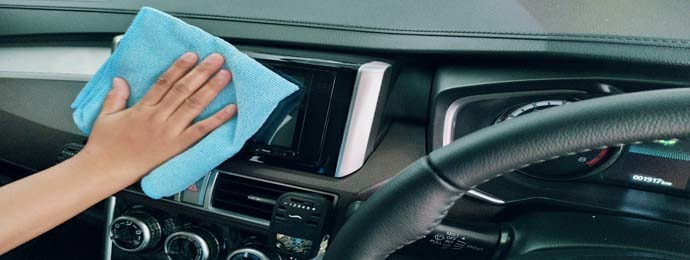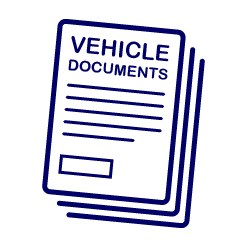
To give our customers the best and most secure experience, we are unable to support the browser that you are currently using as it is out of date. Many features of our website will not function properly due to them not being supported by older browsers. We strongly recommend upgrading as soon as possible - to find out where to get the latest browsers, please click the update button to the right.
Mon-Fri 9am to 5.30pm
Our website uses cookies
We use performance, social media and advertising cookies to improve your browser experience, integrate with social media and show relevant, personalised advertisements tailored to your interests. Click ‘Accept’ to accept these cookies and continue browsing. For more information or to amend your preferences, visit our privacy policy.
Search / FilterThis guide explains the fair wear and tear process for lease vehicles, including a breakdown of what is contained in the guidelines and examples of some of the most common problems that result in customers paying lease-end penalty charges.
This guide also contains advice about maintaining your lease vehicle and the preventative action you can take to keep your lease vehicle in acceptable condition and minimise de-hire charges.
Find out more about how fair wear and tear guidelines work below.
Please note, the information provided on this page is intended as a guide only.
Fair wear and tear is the natural deterioration that occurs to a car or van due to regular use throughout the lease term. It is not to be confused with damage caused by an accident, negligent behaviour or poor treatment.
The British Vehicle Rental and Leasing Association (BVRLA) – the leasing industry’s trade body – provides general guidelines on what constitutes fair wear and tear. These independent guidelines ensure the rules are clear, easily understood and fair for everyone involved.
Although the BVRLA provides the general guidelines, each finance provider will have its own set of fair wear and tear rules, broadly based on the general guidelines. You must follow the guidelines from your specific finance provider to avoid any unexpected costs at the end of your lease contract.
If you are nearing the end of your lease and want a copy of your vehicle's fair wear and tear guidelines, please contact Nationwide Vehicle Contracts on 0345 811 9595.

Before returning your vehicle, please ensure you consult the official wear and tear guidelines from your finance provider. The guidelines detail what is acceptable for different areas of the vehicle and include specific guidance with regards to the following areas:
The guidelines also include:

If you’re reaching the end of your lease contract, taking the time to prepare your car or van properly for inspection could be the difference between paying a penalty charge and not.
Naturally, it is impossible to cover every single form of damage, but the tips below should help give you an idea of the minimum return standards expected and how you can rectify any damage you find.
When vehicles are returned at the end of their contract, they should be in good condition for their age and mileage. The BVRLA advises that you inspect your vehicle for damage 10 to 12 weeks before it is due to be returned. This should give you enough time to check the vehicle against the condition guidelines and arrange for any necessary repairs to be carried out.

Walk all the way around the vehicle, checking each panel at a time for significant damage. Be sure not to forget the roof.

Kneel down at the front and rear of the car or van and look along each side to help you spot any missed damage.

Inspect all lamps, lenses windows and mirrors for any chips, cracks or holes.

When you are making your checks to the vehicle be sure to check the spare wheel too.

Having cleaned and valeted the interior, check for any odours, tears, burns or stains.

Everything must be fully functional, including audio equipment and accessories.

For a car or van to achieve its highest possible resale price, it must have all the relevant documentation and up-to-date service and maintenance history.
The average car lease contract length in the UK is three years. A car on a three-year lease typically has an average mileage of around 36,000 miles. After this amount of time and miles, you'd expect the vehicle to have half-worn tyres and half-worn brakes but no chipped or broken glass. You'd also expect the carpet/upholstery in a cleanable state with one or two minor door dents that could be removed with a paintless repair. After three years, there shouldn't be any paint scratches or fading, no tears or burns on the interior, and all equipment should be in working order.
All this is laid out and explained in the lease agreement.

Damage to leased vehicles is typically classified as either acceptable or unacceptable. Acceptable damage includes normal wear and tear that comes with driving, whereas unacceptable damage includes more severe damage.
Typical acceptable damage includes:
Please note: These are broad guidelines and what constitutes acceptable and unacceptable damage to a leased vehicle varies by provider. As such, it's always a good idea to read your lease contract's terms and conditions.
Some of the most common problems that result in customers having to pay lease-end penalty charges include:
The BVRLA is the industry standard for determining what is considered wear and tear or damage. However, most finance providers have their own standards. These are detailed at the start of the contract and can usually be found in the leasing agreement terms and conditions.
The most effective method of avoiding penalty charges is to keep on top of the vehicle’s maintenance and appearance throughout your lease period. An accredited servicing outlet should carry out regular maintenance and servicing, and the vehicle service record must be stamped at each service.
Regular cleaning of the interior and exterior will also help ensure the vehicle looks good. Polishing the vehicle exterior around four times a year will help reduce the effects of any stone-chip damage, limit the effects of air-borne contamination (e.g. bird droppings), remove traffic grime and make routine washing easier.
Other standards that you will be expected to follow include:
For general information and advice on maintenance, view our Vehicle Maintenance Guide.
You must return your lease vehicle in the best condition possible as you are responsible for any damages.
It's always best to repair any damage to your lease vehicle as soon as possible to prevent it from worsening. Most manufacturers use the rule of thumb on scratches. You probably won't be charged if you can cover it with your thumb, but we recommend taking care of any apparent damage, such as larger scratches, before dealing with an inspector.
If your lease vehicle is damaged or involved in an accident, you should contact your insurer to report the incident, even if you're not making a claim. Unless the damage is so severe that the vehicle is written off, your insurer will advise you on how to proceed with the damage repairs.
Do not attempt to repair the damage yourself. You risk invalidating your insurance and incurring a penalty cost because your insurer does not consider you an authorised mechanic.
If you discover any damage that you believe is likely to incur a penalty charge as part of your inspection, you can arrange to correct the damage before the vehicle is returned.
Before doing any maintenance work, you must speak to your finance provider to determine whether its approval is required. Usually, all repair work must be completed to a professional standard by repairers who provide a full warranty on their work.
For small areas of damage such as chips, dents and scratches, a SMART repair (small and medium area repair technique) may be appropriate, provided your finance provider approves. You should use a SMART repair organisation to carry out the repair work. SMART repairers are members of the Vehicle Builders and Repairers Association (VBRA). They are obliged to comply with an OFT-approved Code of Practice which sets high standards for repairs and customer service.
Outside of any repairs covered as part of the standard manufacturer's warranty, the lease contract holder is liable and responsible for any repairs on a lease vehicle. Damage to leased vehicle may result in end-of-lease charges or penalties when you return the car so it is probably best to have it fixed in advance. Returning a leased car with damage beyond normal wear and tear can be pricey, so it's usually far cheaper to repair it beforehand by an approved mechanic.
On the collection day, a qualified inspector will complete a full visual inspection of the vehicle and assess its condition. Any damage deemed outside of fair wear and tear will be noted on a condition report, along with the cost of repairing the damage or replacing any missing items. The inspector will ask you to sign the condition report once they have completed their review.
If you disagree with the inspector's report, you will need to note the detail of your disagreement on the document provided. This will not remove or reduce the cost of the damage but will prompt a review process by the finance provider. Here, a damage team will look to see if the damage in the imagery matches the quoted recharge cost and whether the charges will stand. If not, the costs may be removed.
You can read more about end-of-lease charges in our handy De-Hire and Damage Charges guide.
Please remember that in all cases, you or your nominated handover representative will have seen this damage at the point of vehicle handover and thus should have full knowledge of the damage as found and recorded on the inspection sheet.
For more information and advice, consult your finance provider's fair wear and tear guide.
Is your current car leasing contract coming to an end? Check out our latest car leasing offers or try one of the deals below.